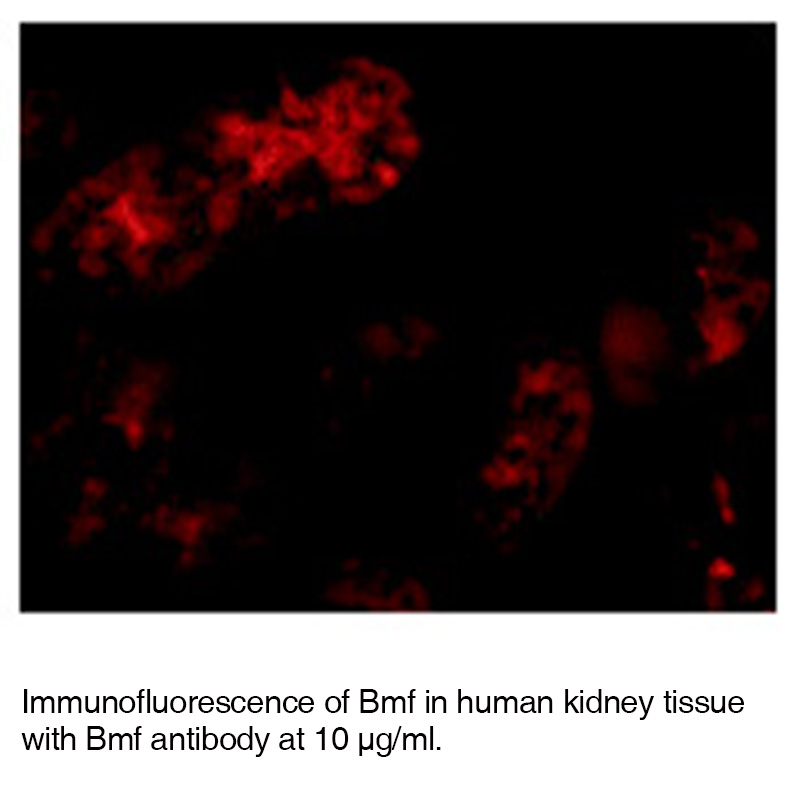Anti-Human Bcl-2 Modifying Factor (CT) (BMF)
Data
- -
- -
Antibody DetailsProduct DetailsReactive Species Human Host Species Rabbit Immunogen PN:B494 Product Concentration 0.5 mg/ml Formulation This polyclonal antibody is formulated in phosphate buffered saline (PBS) pH 7.4 containing 0.02% sodium azide as a preservative. Storage and Handling This polyclonal antibody is stable for at least one week when stored at 2-8°C. For long term storage, aliquot in working volumes without diluting and store at –20°C in a manual defrost freezer. Avoid Repeated Freeze Thaw Cycles. Country of Origin USA Shipping Next Day Ambient RRIDAB_2828180 Each investigator should determine their own optimal working dilution for specific applications. See directions on lot specific datasheets, as information may periodically change. DescriptionDescriptionSpecificity Rabbit Anti-Human Bcl-2 Modifying Factor (BMF) recognizes and epitope near the C-terminus of Human BMF. This polyclonal antibody was purified using affinity chromatography. Background Apoptosis is related to many diseases and development. Members in the Bcl-2 family are critical regulators of apoptosis by either inhibiting or promoting cell death. Bcl-2 homology 3 (BH3) domain is a potent death domain. BH3-only proteins, including Bad, Bid, Bik, Hrk, Bim, Noxa, and PUMA, form a growing subclass of the Bcl-2 family. A novel BH3-only protein was recently identified in human and mouse and designated Bmf (for Bcl-2-modifing factor).1 The BH3 domain in Bmf is required both for binding to Bcl-2 proteins and for triggering apoptosis. In healthy cells, Bmf associates with the dynein light chain 2 (DLC2) component of the myosin V motors and is sequestered by the cell's actin cytoskeleton. Disruption of the actin cytoskeleton, either by depolymerization of actin filaments or by detachment of cells from the extracellular matrix, triggers release and activation of Bmf, initiating the downstream apoptotic program.1,2 Bmf is constitutively expressed in many tissues.1,2 PubMed References & Citations1. Puthalakath, H. et al. (2001) Science. 293(5536):1829-32. 2. Hunt, A. and Evan, G. (2001) Science. 293(5536):1784-5. Technical ProtocolsCertificate of Analysis |
Related Products
- -
- -
Prod No. | Description |
|---|---|
B382 | |
B384 |



